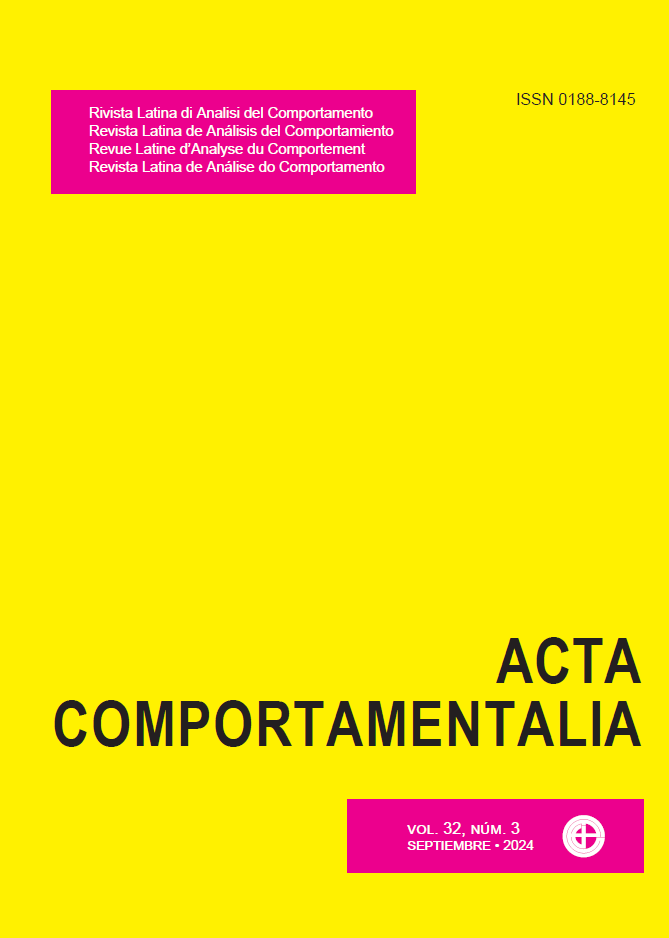Effects of Hot Air Blast (HAB) Punishment During Extinction and Reconditioning of Responding
DOI:
https://doi.org/10.32870/ac.v32i3.88363Keywords:
punishment, response suppression, extinction, response recovery, operant reconditioning, hot air blastAbstract
One of the main debates about punishment concerns its transient or permanent suppressive effects. The asymmetric theory holds that the suppression observed in punishment is not a direct result of the response-punishment relationship, and therefore, the suppressive effects would be temporary. The symmetric theory argues that punishment is the result of a consequential history that directly weakens the response. Studies addressing this issue have used different time points to measure the effects of punishment, ranging from the presentation of the aversive stimulus to times after its removal. Given the ambiguous results of these studies, the present study aimed to evaluate the effect of punishment on responding during extinction and reconditioning sessions, using a hot air blast (HAB) as the aversive stimulusParte inferior do formulário, seeking to identify in which contexts suppression would be transient or permanent. Twelve experimentally naive male Wistar rats (Rattus norvegicus) were exposed to response-reinforcement sessions (Phase 1), and extinction sessions (Phase 2) - where half of the subjects were exposed to punishment in FI-30 s from minute five to twenty of the first session (Ext+HAB group), and the other half were exposed to only extinction (Ext group) - and three reconditioning sessions (Phase 3). As a result, both groups suppressed the response during Phase 2, however, during the punishment session, the Ext+HAB group showed greater response suppression than the Ext group. After the removal of the HAB in Phase 2, the subjects in the Ext+HAB group showed response recovery, but the cumulative percentage of responses emitted was lower than those in the Ext group. In Phase 3, both groups responded again, with no systematic difference between groups.
The data was similar to the results of Boe and Church (1967) when using mild or moderate intensities of electric shock, allowing the suppression of the response at levels approximate to that of the Ext group. This result indicates that, depending on the current contingencies, the timing of the measurement, and the adopted metric, the durability of suppression oscillates between brief effects and permanent effects.
Downloads
Downloads
Published
How to Cite
Issue
Section
License

<a rel="license" href="http://creativecommons.org/licenses/by-nc-sa/4.0/"><img alt="Licencia de Creative Commons" style="border-width:0" src="https://i.creativecommons.org/l/by-nc-sa/4.0/88x31.png" /></a><br />Este obra está bajo una <a rel="license" href="http://creativecommons.org/licenses/by-nc-sa/4.0/">licencia de Creative Commons Reconocimiento-NoComercial-CompartirIgual 4.0 Internacional</a>.






